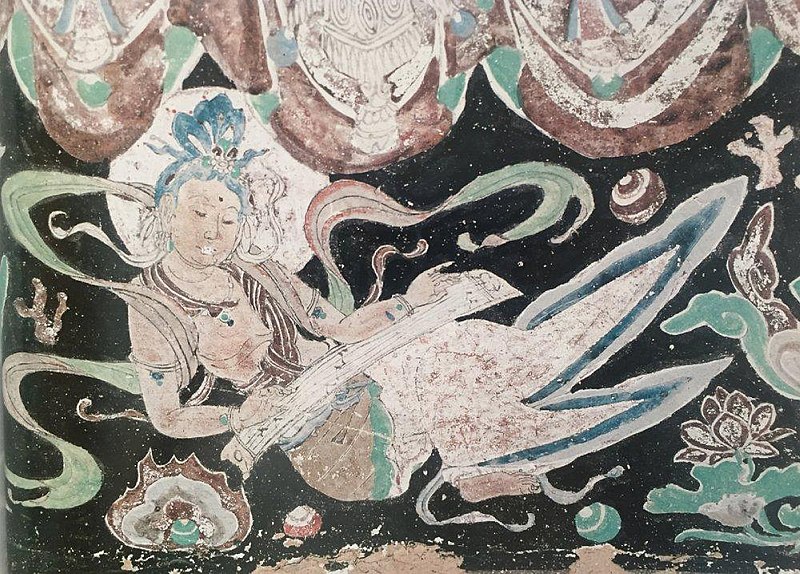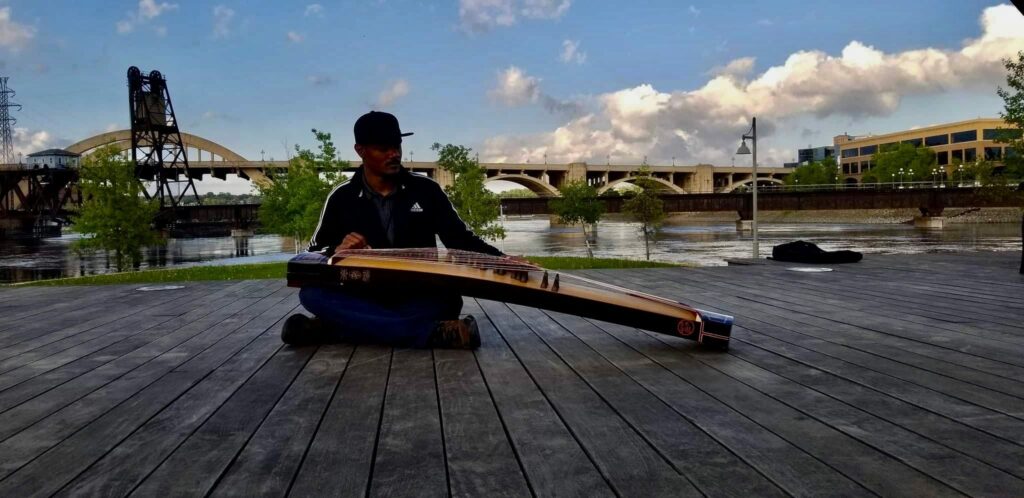
Photo: Yulin Cave 10, Western Xia, (1036-1227 C.E.), Wikimedia ( Apsara plays the zheng)
Going to temple every week was always quite exciting. The bells, the incense, the chanting and the strong community all together brought an incredibly warm and spiritual experience. I’ve always thought of ordaining as a buddhist monk, but the opportunities to ordain are not easy to come by. To ordain as a monk takes commitment, devotion and hard work, and is certainly not an easy life. There are many paths into a deeper stricter practice, the practice of studying buddhist literature, the practice of studying ones mind, studying ceremonies etc. These different practices can take us deeper into our spiritual journey. For me, learning the guzheng has brought me closer to my spiritual journey, in a very interesting way it has also brought me closer to my ancestors as well, and the same is true for my buddhist practice. Each time I give an offering I think of my ancestors and relatives, the world and everything and everyone. Giving offerings with a pure heart, with ones mind on those who experienced injustices can be a powerful way of healing from the generational traumas of slavery and white supremacy.
After nearly 10 years of inquiring to the abbots, monks, nuns and the Buddhist community about ordination, I was finally accepted into 4 monasteries. It was super exciting, I felt happy and peaceful however still a part of my heart was telling me to stay in Minnesota. I had an opportunity to study with a high ranking Lama in a Tibetan monastery, a couple of Zen masters in Vietnam and also with the monks in California and Kentucky. Through the intense studying, reciting scriptures and meditation, I’ve found even more of myself and what I needed for my practice in this lifetime, and that was mostly solitude. Without leaving behind my faithfulness to the Buddhist monastic tradition, I decided that I needed to meditate and practice in such a way that I can also benefit the Black community in the present moment and in the future. Talking with others about the black buddhist experience is always interesting, many people do not believe we actually exist, or they think its a “trendy phase”. No, we do exist, and our experiences, and perspectives are also valid. We exist in every lineage, in every language, in the north, in the east, south and west. However small the percentage of black Buddhist practitioners may be we will still hold together through love and the black buddhist experience. No matter the distance, or distance in time, it is our hearts and the goals we have that will bring us together in a community of love.
Through this journey into stillness I have understood silence, and it was in this silence that I realized music is also quite sacred, and the Guzheng is just that. Focused, with a heart of love, if your art calls to you, listen. Art is what brings all walks of life together, it is healing, it is emotion, it is history and it is the key that unlocks many gaps, distance, borders and barriers. I hope my new original compositions that are in the works bring a moment of stillness, peace and beauty to anyone who listens. I hope that these compositions will also build a strong basis of material for the African American Guzheng musicians of the future. The world may not see you yet, but I, Jarrelle Barton do.
Jarrelle

